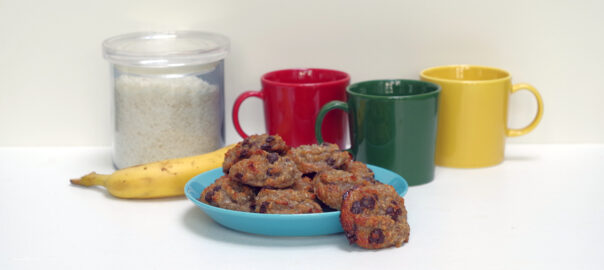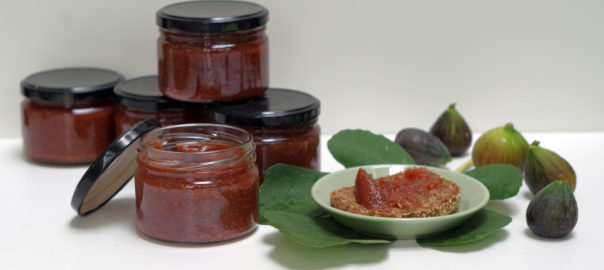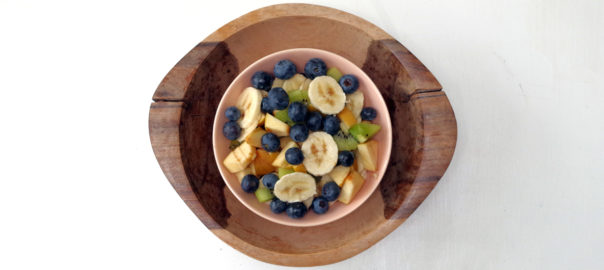Yoga Kitchen – Simple, healthy, and plant-based
A precious gift from Indian Summer
Fruit, at least with the exception of tropical regions, is only available during a short period of the year. It is late summer, the transition between summer and autumn. Fruit is harvested and the fruits are ripe and can be picked. According to the Eastern view of energy and the seasons, it is one of the four transitions between the four major seasons where the earth energy is most strongly tangible.
Sometimes the harvest is so exuberant that it is impossible to eat all that fruit before it spoils.
What are the nutritional benefits of fruit?
Fruit is a great gift from nature. It contains:
- Water
- Vitamins
- Minerals
- Fibres
- Plenty of carbohydrates, much of which are relatively fast-absorbing sugars
Fruit contains little protein and almost no fats.
If you eat the fruit whole, the absorption of sugars slows down somewhat. It is much healthier for maintaining healthy blood sugar levels than drinking fruit juice.
Read more information on the best way to enjoy fruit here.
How best to store fruit?
We can preserve vegetables over the long term in a very eco-friendly way through the lacto-fermentation process. However, fermentation of fruits is more difficult. It is a delicate matter. Because they are packed with natural sugars, which results in alcohol being produced by the fermentation processes.
To preserve fruit in an environmentally responsible way, you can use one of the following techniques, for example:
- Storage in a naturally cool room (such as a cellar or basement). This can only be done for certain types of (hard) fruit.
- Cooking and then sterilising. This was popular with our grandparents.
- Drying or dehydrating.
- Making jam or jelly.
Our grandparents stored their apples almost all winter by stacking them on racks at regular intervals in the cellar.
Sterilisation is associated with loss of nutritional value. Vitamins and enzymes are broken down by intense heat.
Drying or dehydrating fruit is very suitable for hot, dry southern regions. Hot air or the sun is used for this purpose. Here at home, even with climate change, really dry summer heat is rare and unpredictable. We need to use a dehydrator. Dehydration extracts the water from the fruit. If it is done at a temperature below 42°c, the nutritional value of the fruit remains almost intact.
And then there is jam, or confiture, as the French say.
The classic way of making jam was by cooking the fruit with 1 kilogram of sugar for 1 kilogram of fruit. And then, possibly depending on the type of fruit, one could add a binder or thickener such as pectin. There is then such an excess of sugar in the jam that bacteria and yeasts do not survive, and this will keep the fruit from spoiling.
The cooking process used to take a long time, which is not necessary at all.
In my youth, people used plain white, refined beet sugar for jam. Even today, people apply that principle for the commercial, classic jams you find in supermarkets. Only in organic shops can you find jams sweetened in a healthier and alternative way, totally omitting artificial chemical sweeteners such as aspartame.
Here is a much healthier alternative for preparing your own, homemade jam. You can apply this to the fruit from your own garden or when you have a large quantity of fresh, organically grown fruit at your hand.
What you need
- One kilogram of fresh, washed and cut fruit
- 300 ml of concentrated apple juice
- The juice of one or two lemons
- 4 to 6 grams of powdered agar-agar
- A small amount of water
This is how you proceed
- Bring the chopped fruit together with the water to the boil.
- Let it continue to simmer on a low heat until the fruit becomes soft.
- Add the concentrated apple juice and bring to the boil again.
- Next, pour in the lemon juice.
- Stir in the agar-agar and mix well.
- Leave to simmer gently for another 2 to 3 minutes.
- Turn off the heat and if wanted and necessary, mix the fruit mass to a homogeneous texture with a hand blender.
- Spoon the jam into cleaned glass jars. Immediately screw on the lid.
- Let cool and then store the jars of jam in a cool, dark place.
The amount of agar agar depends a little on how firm you want the jam to be. Manufacturers state the dosage on the packaging. For a firm, jelly-like thickness, use about four to six grams of agar agar per litre of liquid.
The lemon juice provides a acid note in terms of flavour. It also has the advantage of making the environment of the jam a little more acidic, which further improves the shelf life of your jam.
Once you have opened a jar, store it in the refrigerator.
Bon appétit!
Why is eating according to the seasons better?
We live in a society where we have fresh fruit available all year round, because it is hauled in from all over the world, from all latitudes and often by plane. Therefore, this results in a huge hidden carbon footprint for those products.
Also, our food culture disrespects the connection with the seasons. And that is a pity, because eating according to the seasons ensures, that you are better in harmony with the energy of your environment. Our bodies also go through an energetic cycle every year, making it more beneficial to consume or not consume certain types of food depending on the period of the year. The excess of sweet and high-calorie fruits does not happen to come by coincidence just before the winter period, when food is scarce. Thus, the body had access to an excess of vitamins, minerals and other nutrients before entering the scarcity of winter.
Read more about plant-based nutrition and health:
Read more articles about nutrition, health and plant-based foods:
Read more about plant-based food
Read more about yoga and yoga classes in Schaerbeek:
Check out our yoga classes here:
View our full range of yoga classes



